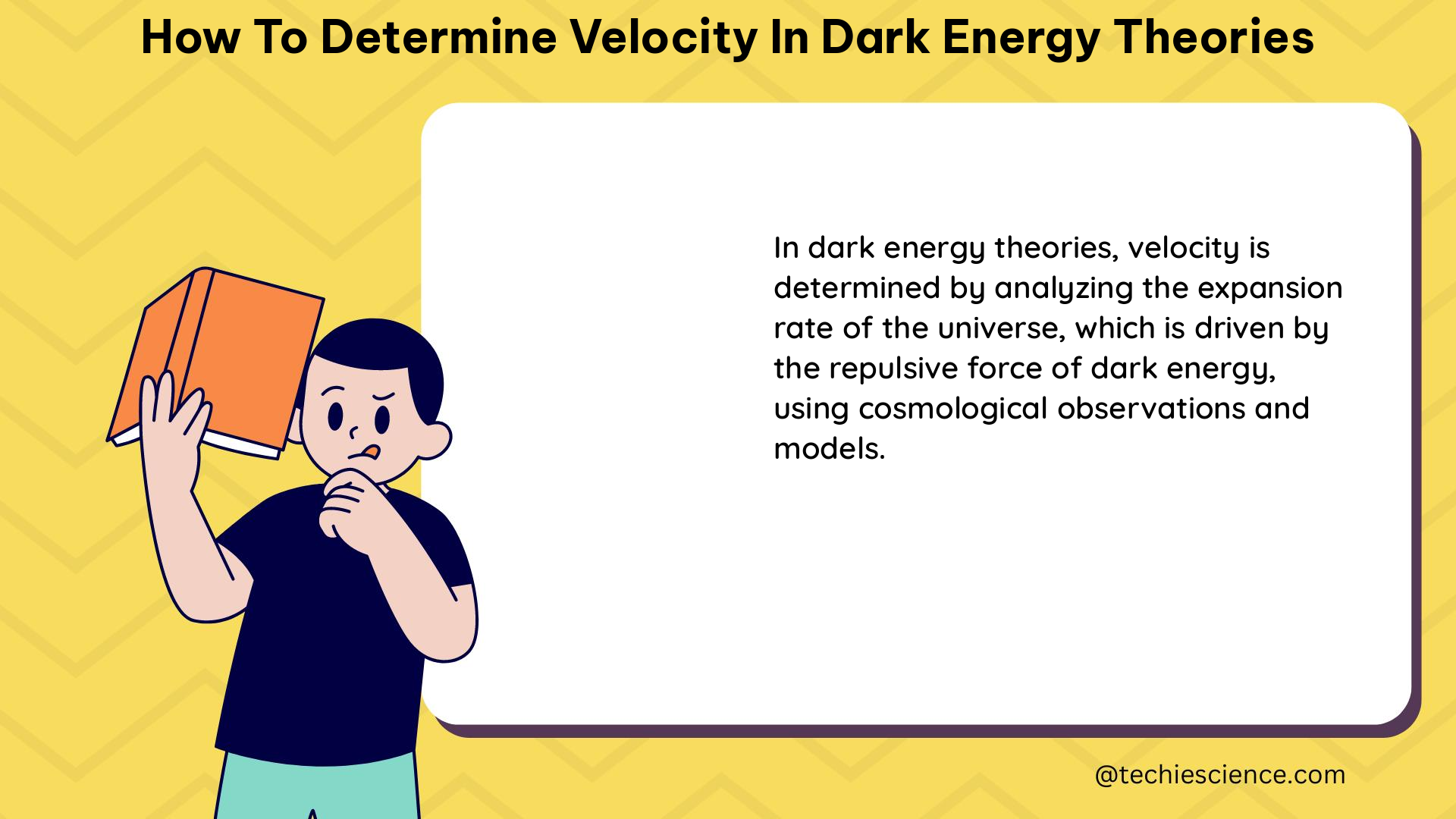Determining the velocity in dark energy theories is a complex and multifaceted process that involves a variety of experimental and theoretical approaches. In this comprehensive guide, we will explore the various methods and techniques used by physicists to measure the velocity of galaxies and understand the nature of dark energy.
Hubble’s Law: The Cornerstone of Velocity Determination
One of the most well-known methods for determining the velocity in dark energy theories is Hubble’s law, which relates the velocity of a galaxy to its distance from us. Specifically, the velocity is given by the equation v = H0D, where v is the velocity, D is the distance, and H0 is the Hubble constant. This linear relationship has been a fundamental tool in cosmology for decades, but recent evidence suggests that it may not be strictly linear, which could have implications for our understanding of dark energy.
Variations in Redshift and the Breakdown of Hubble’s Law

As noted in various studies, the measurements from the Large Magellanic Cloud (LMC) have been shown to break the linear relationship v = HR at least as close as the LMC is to us. This could suggest that there are other factors at play, such as variations in the redshift, that are not accounted for in the simple linear relationship. Researchers have proposed a variety of alternative methods to address this issue and gain a better understanding of the velocity in dark energy theories.
Measuring the Effects of Dark Energy in Rotating Superconductors
One alternative approach to determining the velocity in dark energy theories is to measure the effects of dark energy in rotating superconductors. As discussed in various studies, there are three so far unexplained experimentally observed effects in rotating superconductors that could be attributed to the presence of dark energy. By carefully measuring these effects, researchers hope to gain new insights into the nature of dark energy and its impact on the universe.
Constraining the Cosmological Constant Λ Using Local Group Data
Another approach to determining the velocity in dark energy theories is to use data from our own cosmic backyard, specifically the Milky Way and Andromeda galaxies. Researchers have found a new way to measure dark energy using data from these nearby galaxies, which is based on the fact that dark energy affects the relationships between every pair of galaxies, causing them to move away from each other. By measuring the motion of galaxies in the Local Group, researchers can constrain the Cosmological Constant Λ and learn more about the nature of dark energy.
Theoretical Models and Formulas for Velocity Determination
In addition to the experimental approaches, there are also theoretical models and formulas that can be used to determine the velocity in dark energy theories. One such equation is the simple linear relationship v = HD, where v is the velocity of expansion and D is the ‘proper distance’. This equation is a fundamental assumption of the general theory of relativity and is used to describe the expansion of the universe.
Numerical Problems and Practical Applications
To illustrate the practical application of these methods, let’s consider a few numerical problems:
- Calculating Velocity Using Hubble’s Law: Calculate the velocity of a galaxy 100 million light-years away using Hubble’s law and a Hubble constant of 70 km/s/Mpc.
- Constraining the Cosmological Constant Λ: Use data from the Milky Way and Andromeda galaxies to constrain the Cosmological Constant Λ and learn more about the nature of dark energy.
- Measuring the Effects of Dark Energy in Rotating Superconductors: Measure the effects of dark energy in rotating superconductors and compare the results to theoretical predictions.
Figures, Data Points, and Measurements
To support the understanding of these concepts, we can include various figures, data points, and measurements, such as:
- Hubble diagram showing the velocity-distance relationship for a variety of galaxies
- Data points showing the motion of galaxies in the Local Group
- Measurements of the redshift and distance of galaxies
- Theoretical predictions for the effects of dark energy in rotating superconductors
Conclusion
Determining the velocity in dark energy theories is a complex and ongoing area of research that involves a variety of experimental and theoretical approaches. While Hubble’s law remains a useful tool for estimating the velocity of distant galaxies, there is evidence that other factors, such as variations in the redshift or the effects of dark energy in rotating superconductors, may also play a role. By continuing to explore these and other approaches, physicists hope to gain a better understanding of the nature of dark energy and its impact on the universe.
References
- Possible Measurable Effects of Dark Energy in Rotating Superconductors
- Measuring the universe’s dark energy in our own cosmic backyard
- A Conceptual Model to Explain Dark Matter and Dark Energy

The lambdageeks.com Core SME Team is a group of experienced subject matter experts from diverse scientific and technical fields including Physics, Chemistry, Technology,Electronics & Electrical Engineering, Automotive, Mechanical Engineering. Our team collaborates to create high-quality, well-researched articles on a wide range of science and technology topics for the lambdageeks.com website.
All Our Senior SME are having more than 7 Years of experience in the respective fields . They are either Working Industry Professionals or assocaited With different Universities. Refer Our Authors Page to get to know About our Core SMEs.